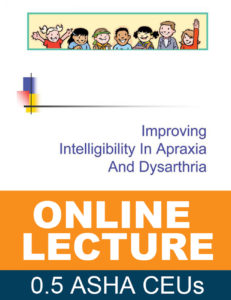This advice-column-style blog for SLPs was authored by Pam Marshalla from 2006 to 2015, the archives of which can be explored here. Use the extensive keywords list found in the right-hand column (on mobile: at the bottom of the page) to browse specific topics, or use the search feature to locate specific words or phrases throughout the entire blog.
“Popping” and Other Techniques to Teach Voicelessness
By Pam Marshalla
 Q: I was at your Improving Intelligibility workshop this winter. On your handout, in regard to teaching voicelessness, you write: “Teach popping with p, t, k.” I did not write anything down and as I look back over the material I have no idea what “popping” is or how to teach it. Help!
Q: I was at your Improving Intelligibility workshop this winter. On your handout, in regard to teaching voicelessness, you write: “Teach popping with p, t, k.” I did not write anything down and as I look back over the material I have no idea what “popping” is or how to teach it. Help!
Ah yes, “Popping” is a term I made up. Let me explain…
When children first learn [p], [t] and [k], they do so with productions that are both inhaled and exhaled. You know what panting is, right? Well, children learn to pant first, then they pant their way through their attempts at these sounds.
Try it y ourself: Pant. Then begin to elevate and lower your jaw as you would while “Jaw Babbling” as you try to make primitive [p]. But continue to pant throughout your many productions. Some of your [p]’s will be produced upon EXHALATION, and some will be produced upon INHALATION. This is what I call “popping.” Kids “pop” as they try to produce [p], [t] and [k].
About the same time, the emergence of the raspberries forces a child to become consistent in his use of EXHALATION while producing sound. The raspberries stabilize exhalation as the correct respiration pattern for speech. One cannot make a raspberries while inhaling. Until then, however, children try all their sounds with both inhalation and exhalation.
Therefore, when I am teaching a child to be voiceless, I use panting, sniffing, snorting, voiceless raspberries and popping as a way to help him infuse voicelessness into his voiced system. Until these sounds emerge, his entire speech sound repertoire is voiced. These sounds help him bring voicelessness into his repertoire in easy (gross motor) ways. Over time, he learns to use these sounds with more refined control. The Popping Sounds refine into mature [p], [t] and [k]. And the voiceless raspberries refine into mature [f], [s], [sh], [ch] and [h].
“Popping,” as well as these other terms, are defined and described in my book and recorded seminar Apraxia Uncovered: The Seven Stages of Phoneme Development.
